+ Advantages:
- Slim and light design, good display.
- Powerful performance.
- Good battery life.
+ Limitations:
- Performance is reduced when not plugged in.
- RAM upgrades are not supported.
+ Editor's Advice:
The Asus Zenbook S16 is suitable for business professionals or content creators who need a high-end AI laptop with a slim and lightweight design, a large screen size, and a balanced experience in terms of portability, powerful performance, and good battery life.
Of course, with such high-end features, the price of this device is not easily accessible to the majority of average users. In addition, the device still has limitations in that it cannot achieve maximum efficiency when using battery power.
Design and display
The Asus Zenbook S16 (UM5606KA) is considered a larger version of the Zenbook S14 model that the company launched in late 2024. The device boasts a minimalist, sturdy design. The build quality is excellent, with no unnecessary details and no warping when force is applied to the body.
The device features two sides crafted from Ceraluminum. This material is 30% lighter but three times stronger than conventional aluminum, offering effective scratch resistance and a longer lifespan. The device also meets the MIL-STD 810H military durability standard. The surface has a matte finish, further enhancing its resistance to dirt and fingerprints during use.





Weighing in at 1.5kg and measuring just 11.9mm thick, this is considered a relatively compact size for a large-screen laptop. This slim and lightweight design allows users to easily carry it around.
Compared to some competitors in the same segment, the 15-inch MacBook Air M4 weighs 1.5kg and is 11.5mm thin, the MSI Prestige 16 AI+ weighs 1.5kg and measures 18.95mm, while the Lenovo Yoga Slim 7 weighs 1.53kg and is 13.9mm thin.
The hinge of this laptop has a relatively different design compared to most laptops on the market. The hinge is designed with four joints, two of which are located near the sides like typical products, and two in the middle.
This design helps distribute force more evenly when the user uses it, resulting in a smoother opening and closing experience, without being too stiff or too loose. The middle section of the device is also slightly concave, allowing users to easily open the screen with one hand. However, this hinge only supports a maximum opening of about 130 degrees, instead of 180 degrees like many other laptop models from the company.
With most 16-inch laptops on the market, manufacturers typically equip them with a full-size keyboard that includes a numeric keypad on the right side to facilitate easier data entry. However, Asus chose to remove the numeric keypad on the Zenbook S16. This could be considered a drawback for users who frequently need to input numerical data.
In return, the keyboard area offers more space. The keyboard has good responsiveness, and the keys are designed with a large size for easy operation. However, due to its thin and lightweight design, the key travel is not as deep as it could be. This keyboard is also equipped with backlighting for easier use in low-light conditions.
The large touchpad features a borderless design extending to both edges. This area is also covered with glass, providing a smooth touch experience. The touchpad is solidly built and does not make any clicking noises during use.
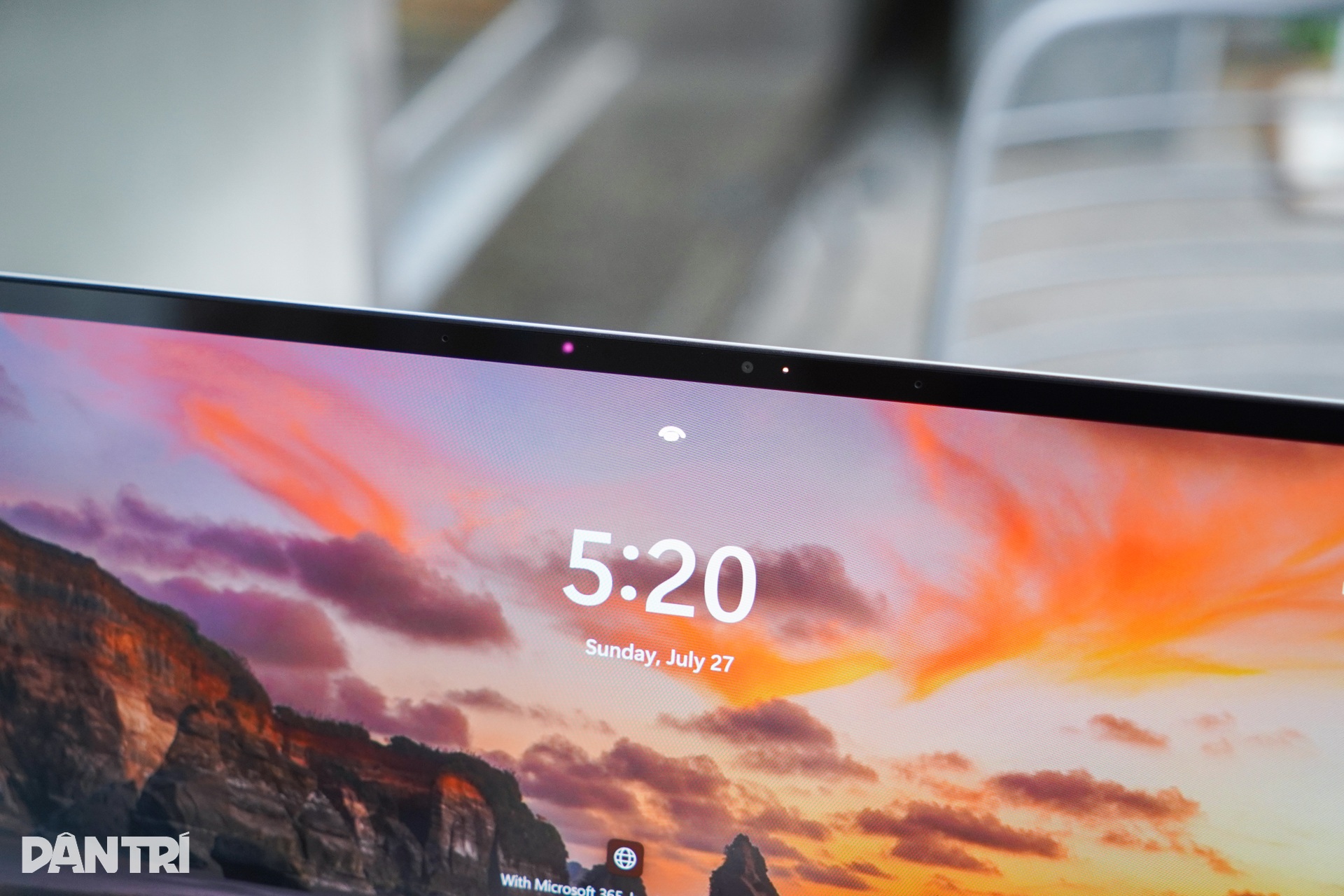

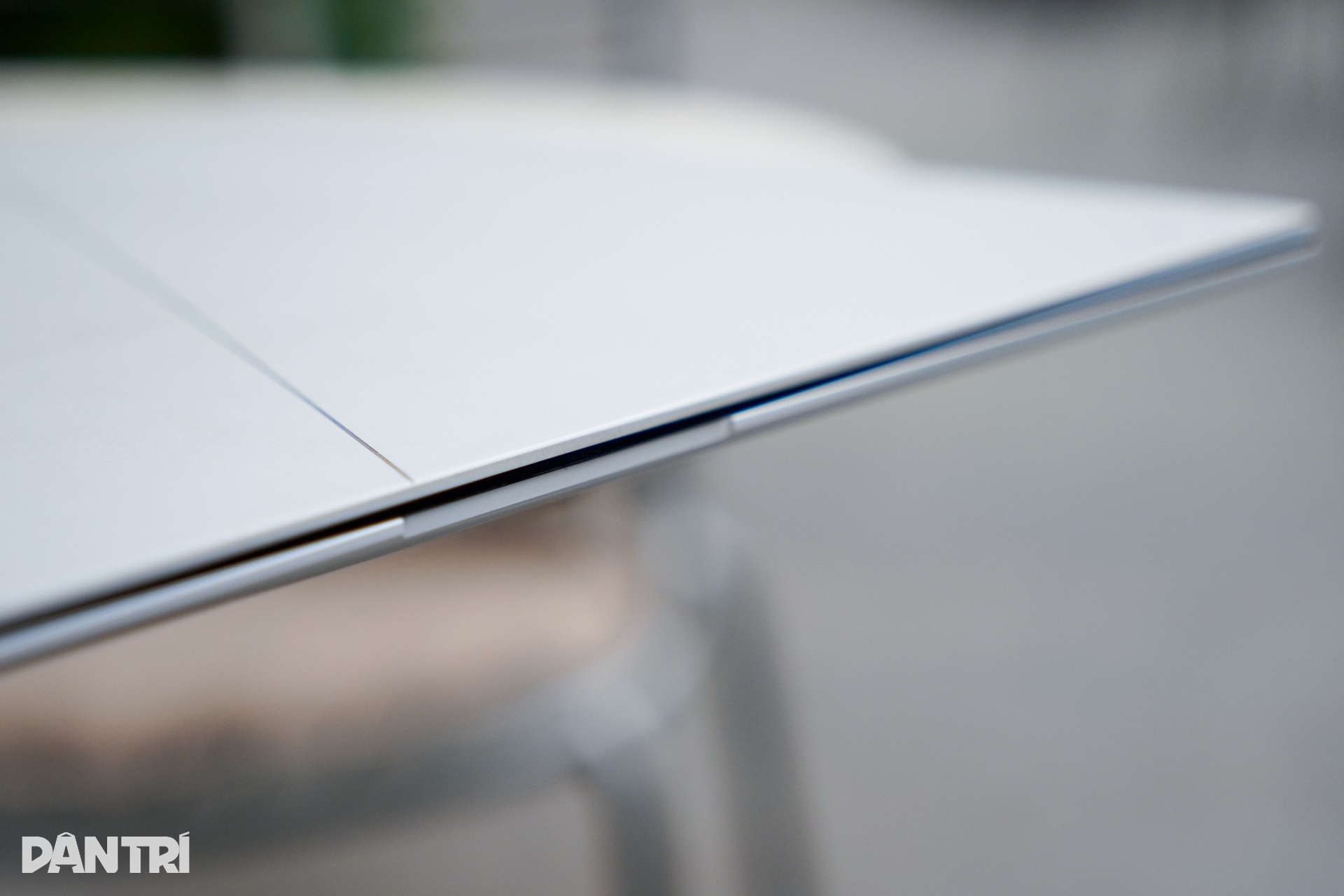
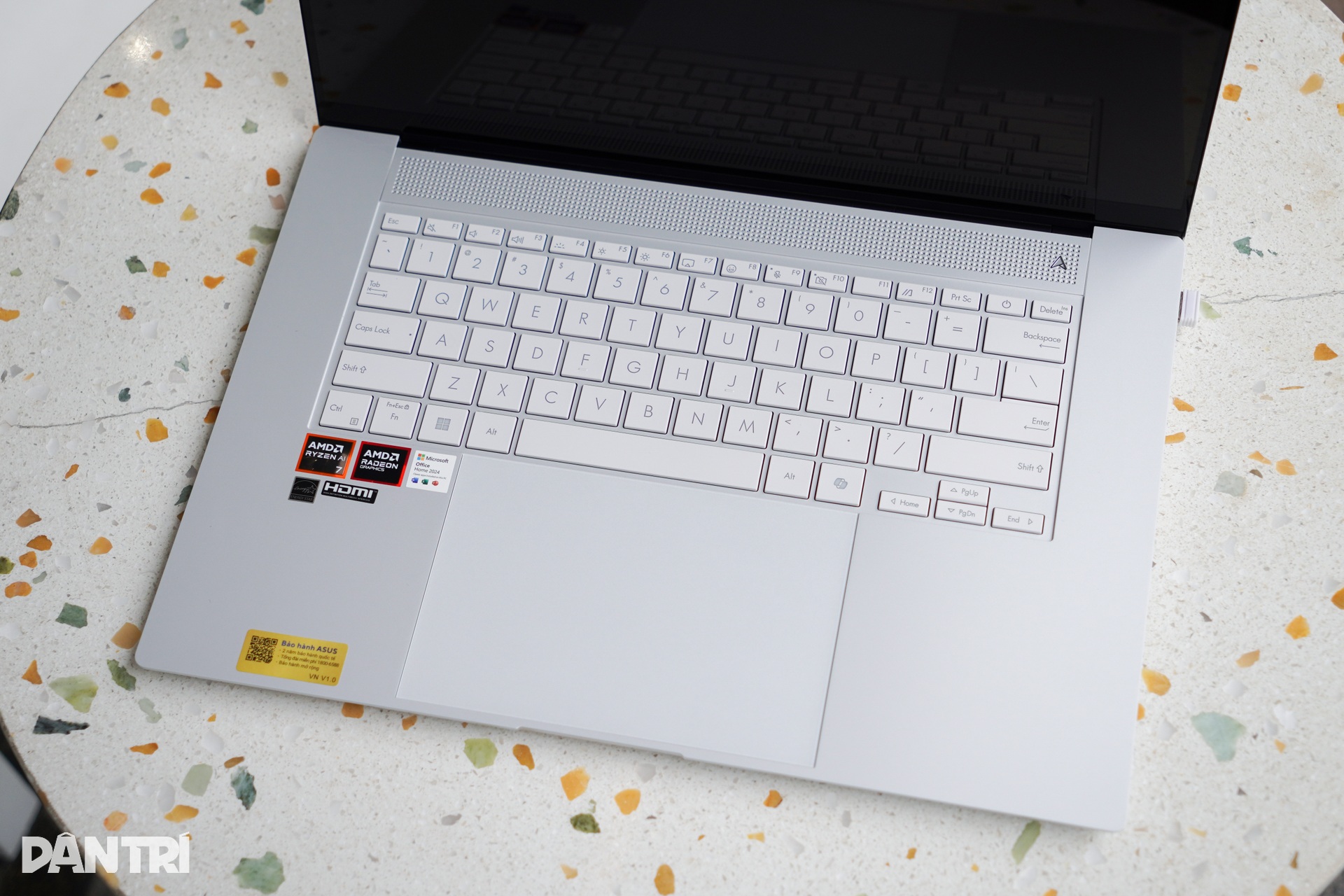

The laptop's 16-inch screen uses an OLED panel with 3K resolution (2880 x 1800 pixels), a 16:10 aspect ratio, and a 120Hz refresh rate. The large 16-inch size provides more display space, allowing users to comfortably multitask. The thin bezels result in a 90% screen-to-body ratio.
The display quality of this screen is comparable to the panels of many other high-end laptops on the market. It displays vibrant colors, has wide viewing angles, and deep blacks. This screen also achieves 100% DCI-P3 color gamut coverage, allowing users to handle professional graphic editing tasks.
The screen's maximum brightness reaches 500 nits, making it easily usable for outdoor work. However, this is a glossy screen that is quite prone to dust and fingerprints, and will reflect light in challenging environments.
The Asus Zenbook S16 comes with a Full HD webcam. The webcam's quality is relatively good, capable of accurate image processing and facial recognition, with no color distortion or noise when used indoors.
Additionally, the device is equipped with an infrared camera system and supports Windows Hello facial recognition unlocking for enhanced security. It also integrates a Microsoft Pluto chip and meets TPM 2.0 security standards, further increasing safety during use.
Ports and speakers
The Asus Zenbook S16 is equipped with 1 USB-A 3.2 Gen 2 port supporting data transfer speeds up to 10Gbps, 2 USB-C 4.0 Gen 3 ports allowing for video output to external monitors, high-speed data transfer up to 40Gbps, and support for Power Delivery charging, 1 HDMI 2.1 port, 1 3.5mm audio jack, and 1 SD card reader.
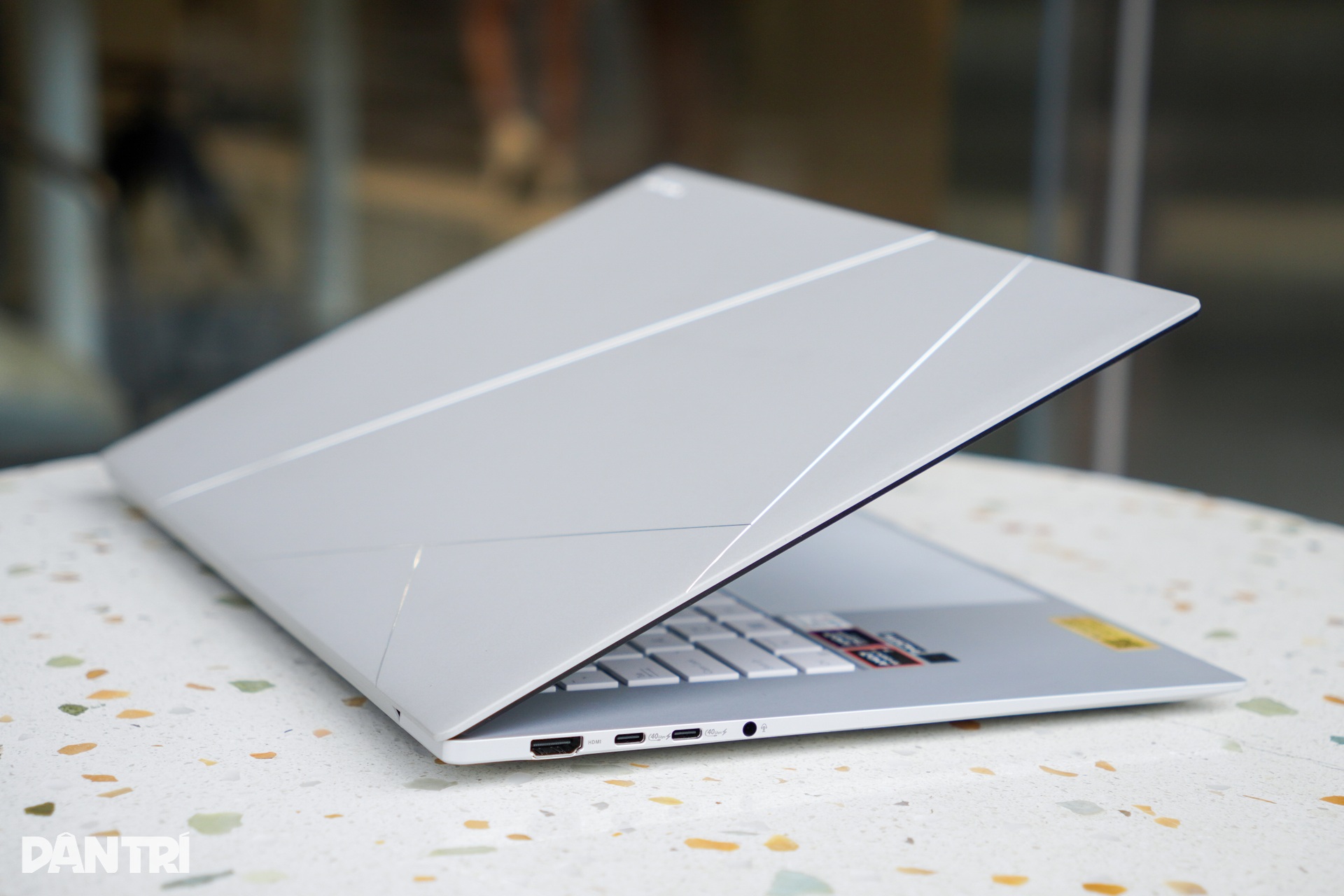
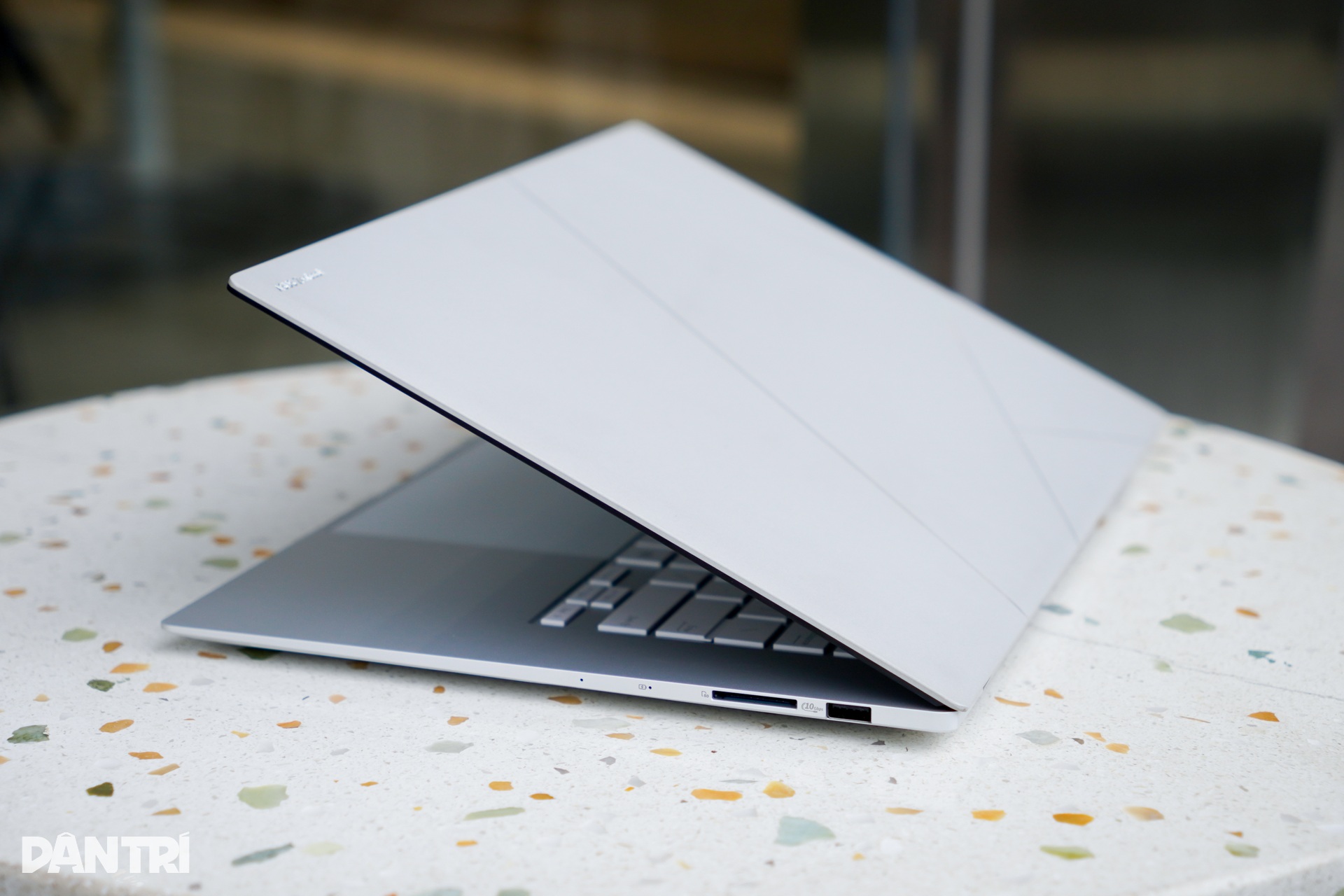
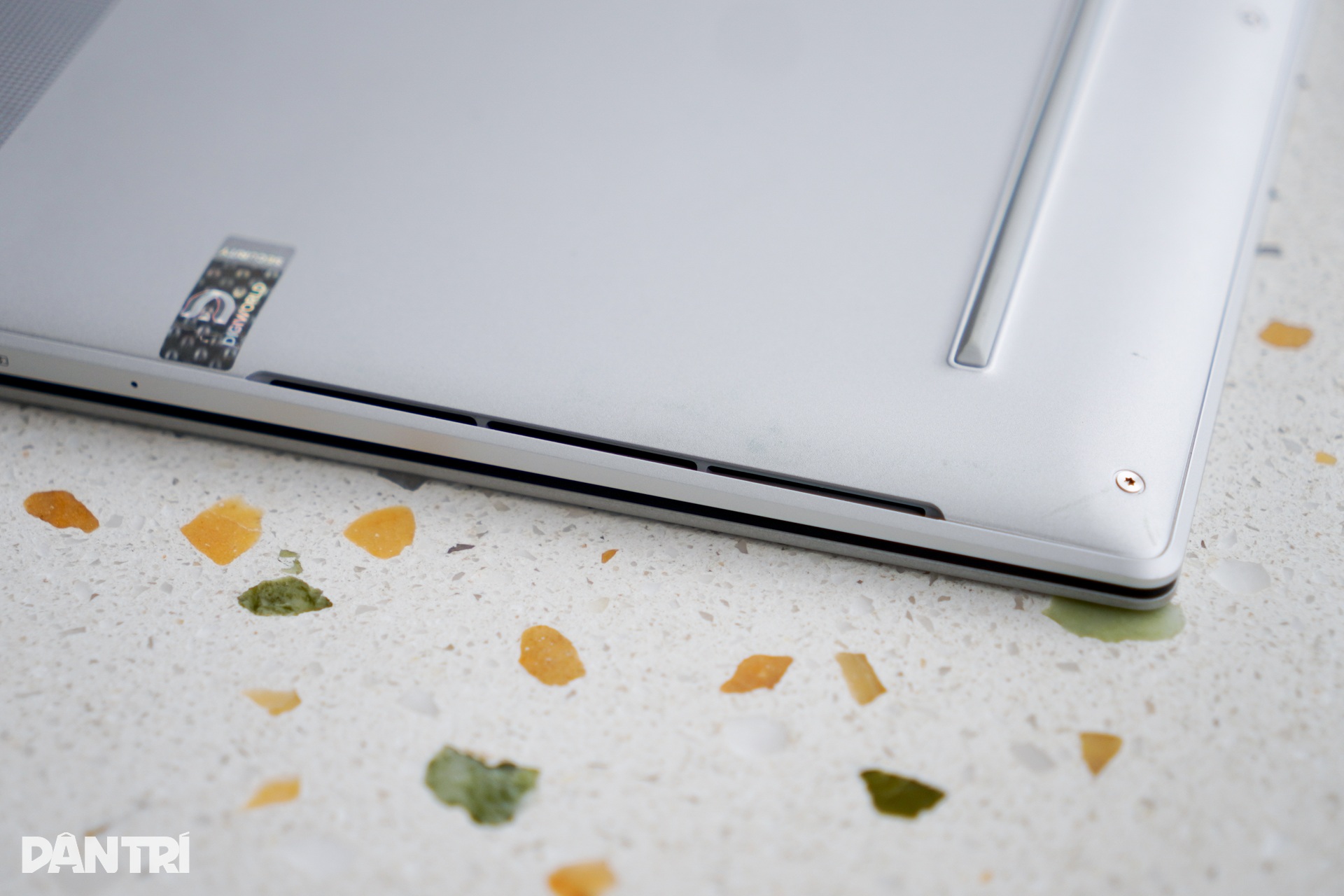

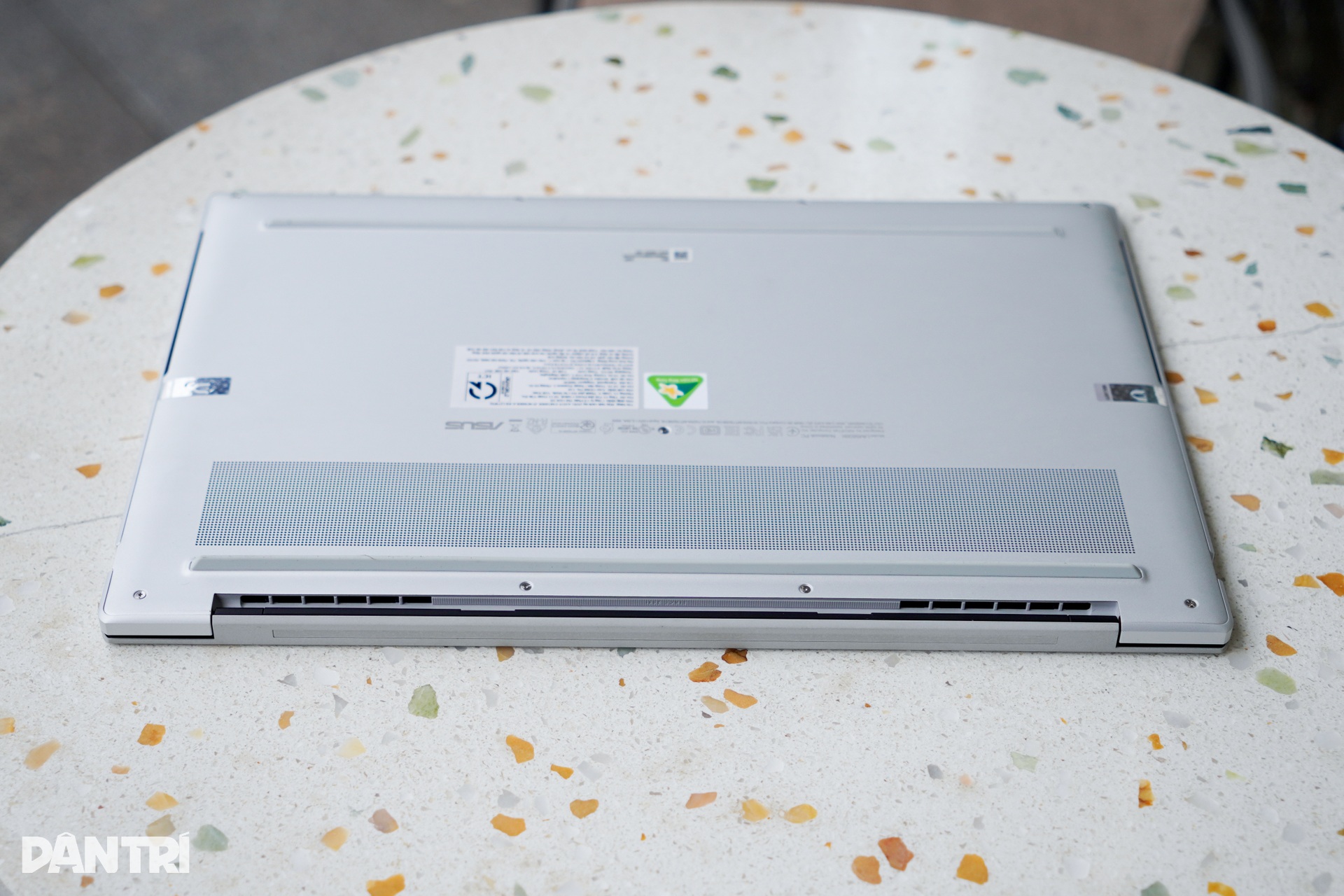
The number of ports is sufficient to meet daily work needs. The built-in SD card reader is especially suitable for users working in graphics, image processing, and video editing. Users will not need to carry external card readers when they need to copy content from the camera to the laptop.
The device features a built-in 6-speaker system capable of reproducing sound with good detail, solid bass, and no distortion even at high volume levels. If the user only uses it in an office, the device's speakers can adequately meet most music and entertainment needs without needing to connect to external speakers.
Performance and AI features
The Asus Zenbook S16 is equipped with an AMD Ryzen AI 7 350 processor, 24GB of LPDDR5x RAM, and a 1TB SSD. It also includes a PCIe M.2 slot for storage upgrades, but does not support RAM upgrades.

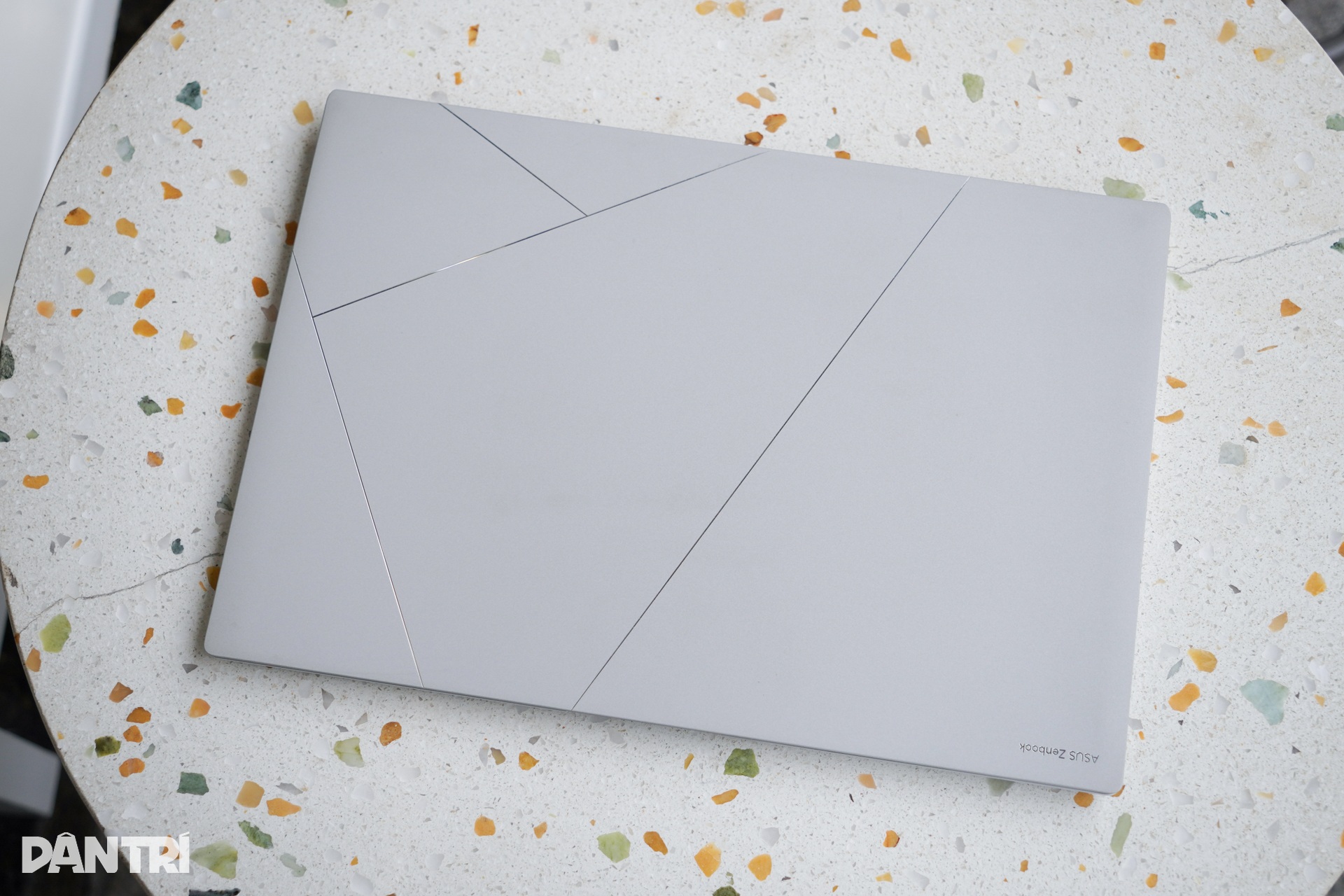
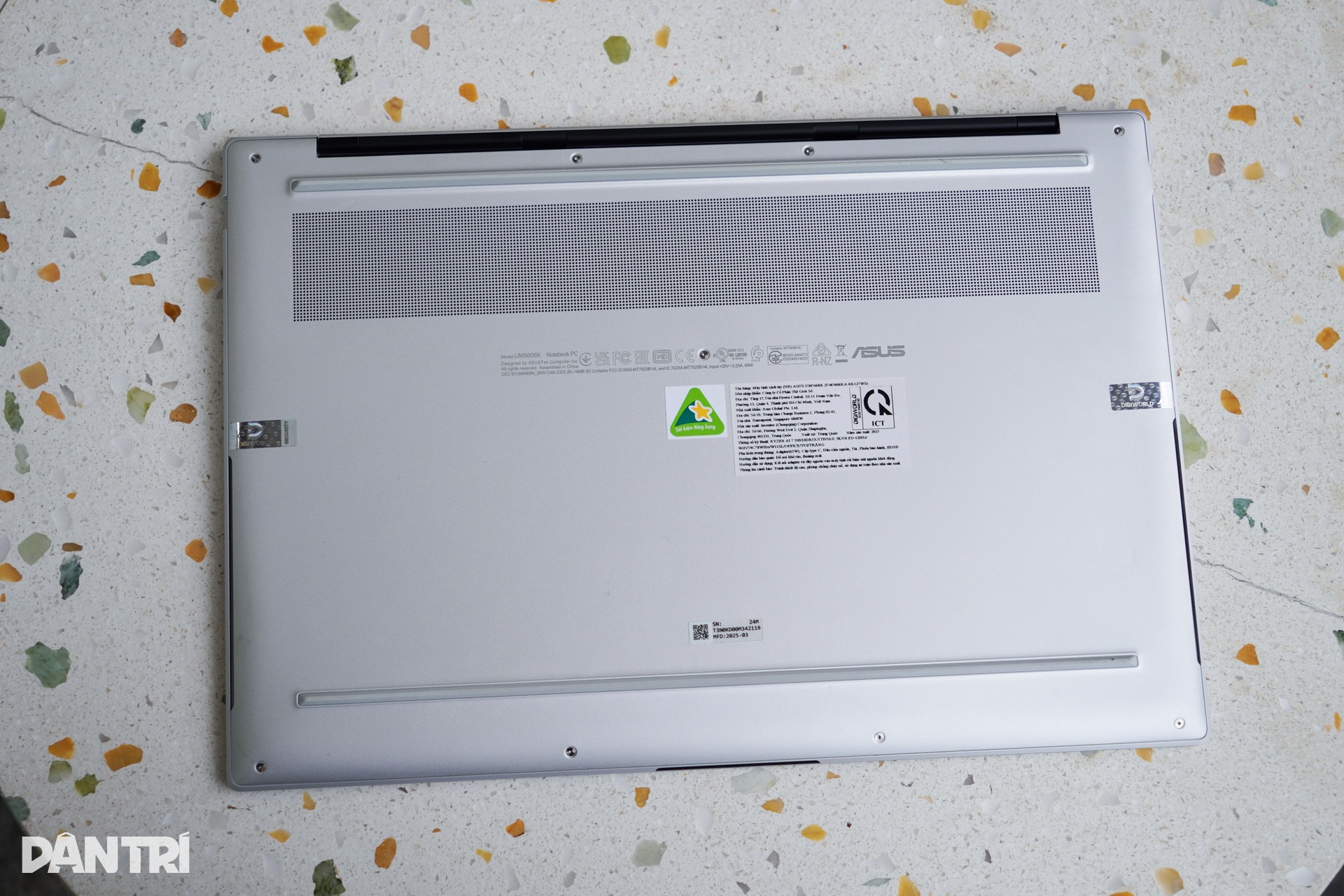
According to performance benchmarking software Geekbench 6, the CPU on the Asus Zenbook S16 achieved 2,787 single-core points and 10,912 multi-core points while plugged in. When not plugged in, single-core performance decreased by approximately 30%, while multi-core performance decreased by approximately 8%.
As you can see, the device still experiences performance degradation when not plugged in. This is a common limitation on most laptops running x86-based processors currently on the market.
Nevertheless, this chip is still a high-performance processor, so users will hardly notice any difference in real-world use with basic tasks. When handling demanding tasks, users should still prioritize keeping the device plugged in to maximize its performance.
The Zenbook S16 comes with an integrated Radeon 860M graphics card. This integrated graphics processor is suitable for playing eSports games with moderately demanding graphics.
Meanwhile, with more graphically demanding AAA games like "Black Myth: Wukong" or "Marvel's Spider-Man Remastered," the device can still handle them at 40-45fps with medium-low graphics settings. Of course, when running heavy tasks and playing games, the device will get significantly hotter, especially in the heat vents near the screen.

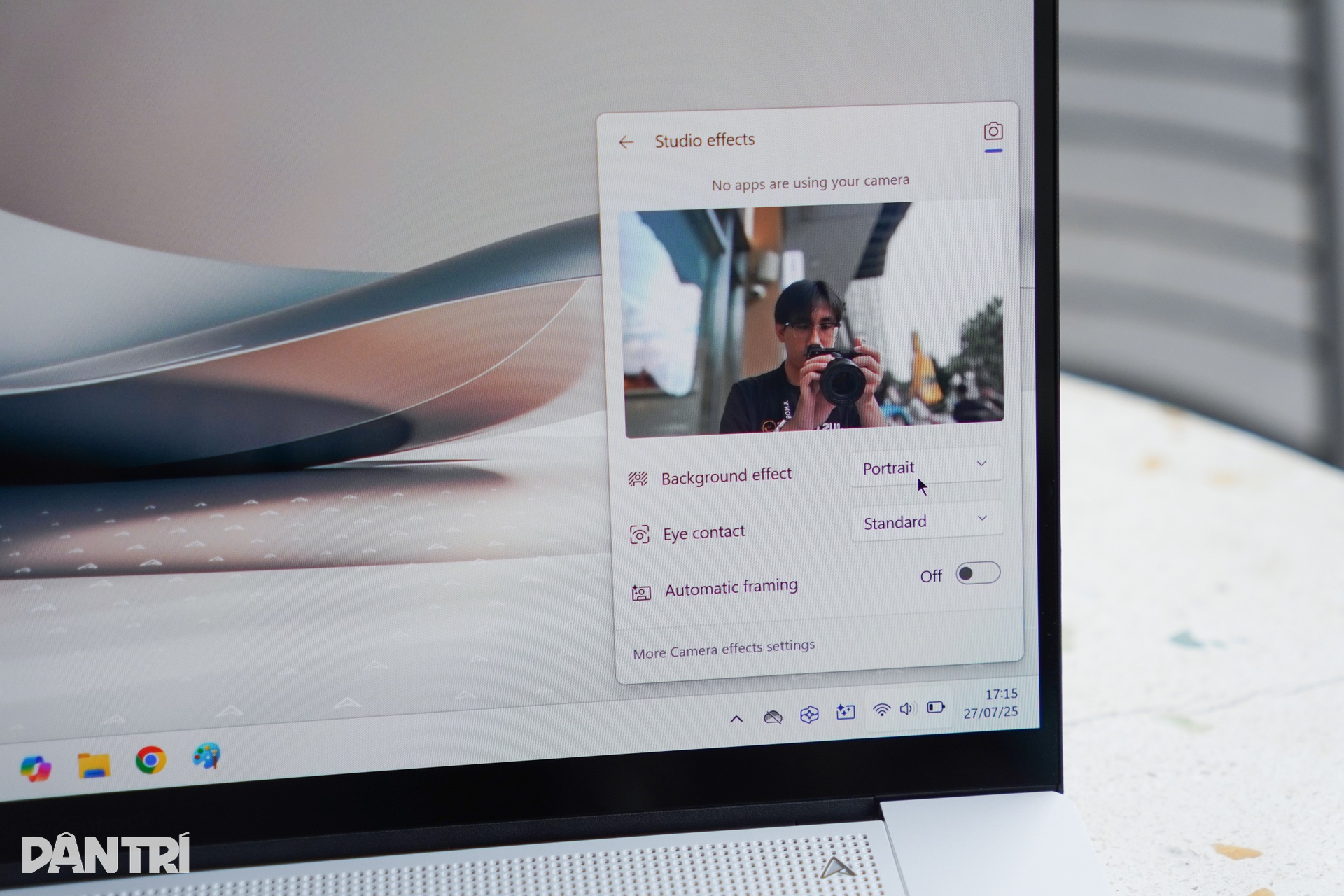

Furthermore, the AMD Ryzen AI 7 350 chip also integrates an NPU with performance up to 50 TOPS (processing 50 trillion calculations per second), helping this AI laptop model meet Microsoft's Copilot+ PC standard. Therefore, the machine supports a range of AI features such as Recall, which helps users search for previously viewed information on the computer; Cocreator, which allows for the creation of AI images; and Live Captions, which supports real-time language translation.
The included battery has a capacity of 78WHrs. In tests, leaving the device in Sleep mode overnight consumed approximately 4% of the battery. For mixed workloads such as web browsing, video viewing, office work, and image editing, the device can provide about 7 hours of continuous use at 80% screen brightness and a 60Hz refresh rate.
Summary
In the same segment, Asus Zenbook S16 competes directly with some rivals such as MacBook Air M4 15-inch version, MSI Prestige 16 AI+ and Lenovo Yoga Slim 7.
This device is suitable for business professionals or content creators who need a high-end AI laptop with a slim and lightweight design, a large screen size, but still ensures a balanced experience in many other aspects such as high portability, powerful performance, and good battery life.

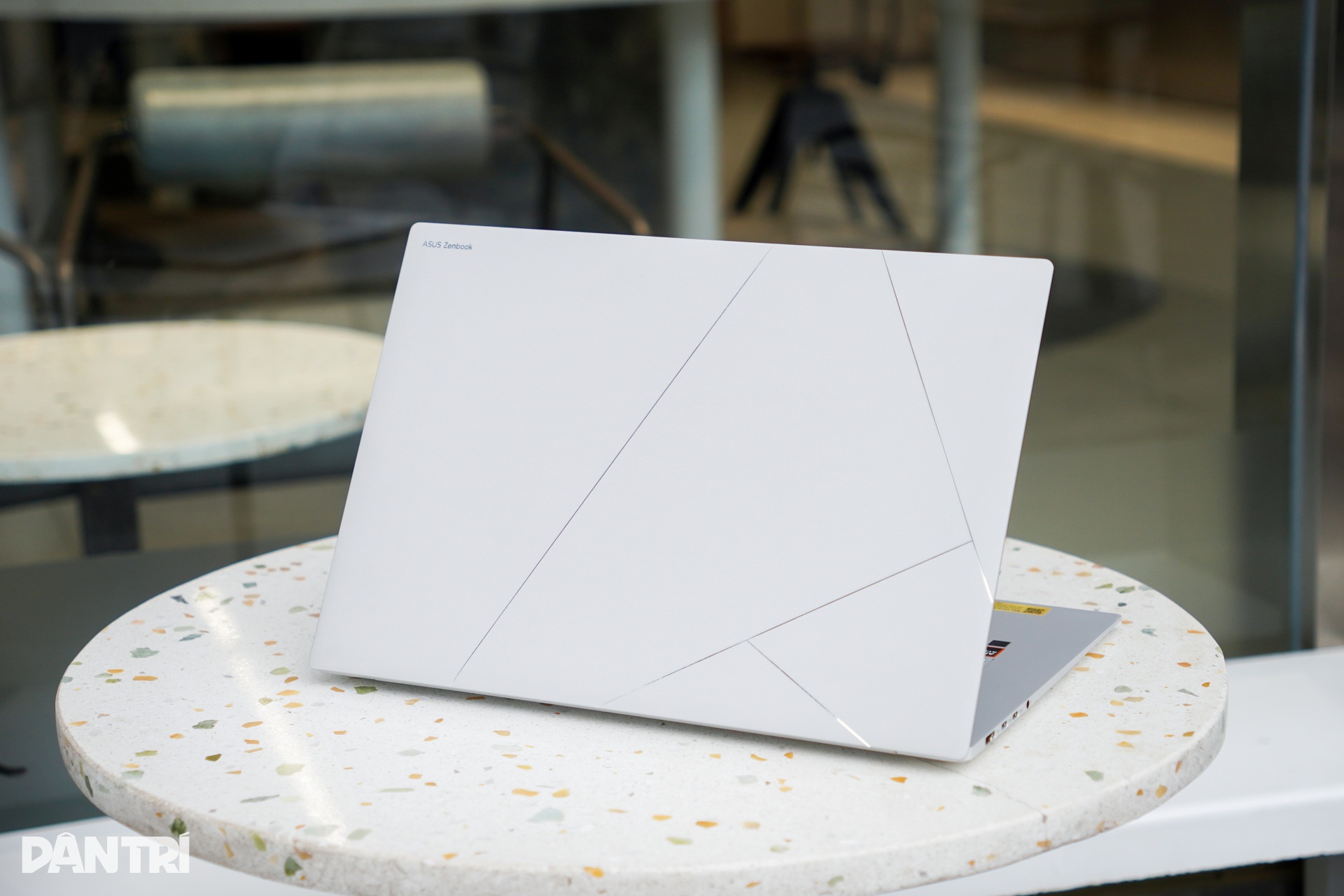

Of course, with such high-end features, the price of this device is not easily accessible to the majority of average users. In addition, the device still has limitations in that it cannot achieve maximum efficiency when using battery power.
Additionally, while the device's configuration is capable of handling gaming well, the cooling system isn't designed for this purpose, so users shouldn't use the device for excessively demanding tasks for extended periods.
Source: https://dantri.com.vn/cong-nghe/danh-gia-asus-zenbook-s16-doi-thu-cua-macbook-air-m4-15-inch-20250801210122192.htm










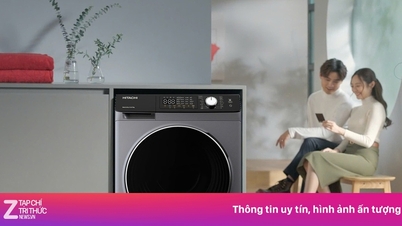

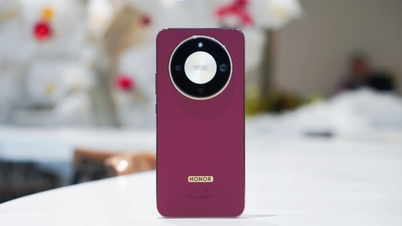






















![[Video] The craft of making Dong Ho folk paintings has been inscribed by UNESCO on the List of Crafts in Need of Urgent Safeguarding.](https://vphoto.vietnam.vn/thumb/402x226/vietnam/resource/IMAGE/2025/12/10/1765350246533_tranh-dong-ho-734-jpg.webp)















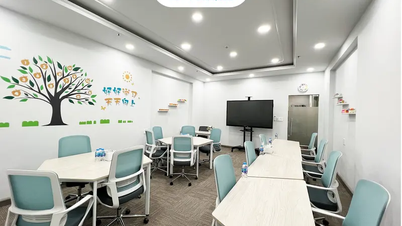




















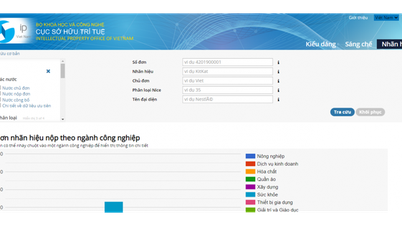






























Comment (0)